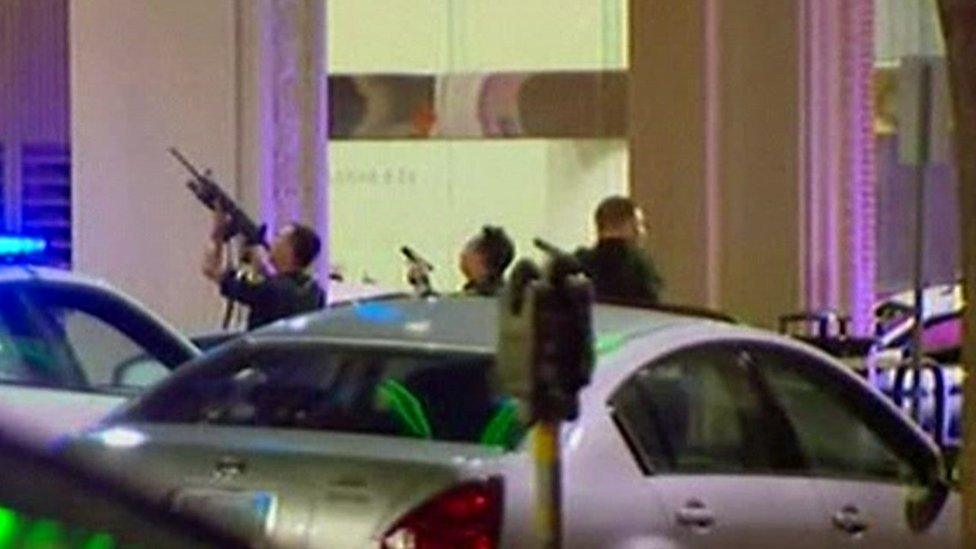Police shootings: Louisiana and Minnesota protests near boiling point
- Published
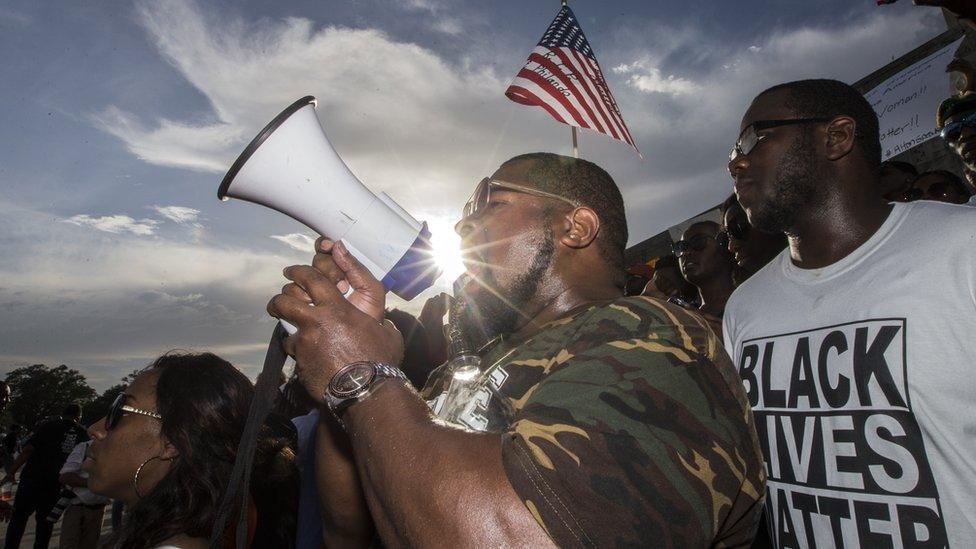
Hundreds of people chanted outside the Louisiana State Capitol Building
'We are praying that it stays peaceful' - Baton Rouge, Louisiana
In Baton Rouge, it's not anger they feel. It's rage.
The people here raised their voices in prayer, in chants and in song at the death of Alton Sterling. At one point during a demonstration, they broke into frenzied dancing to a marching brass band while singing "Free the People".
This is grieving, Louisiana style.
The events in Dallas have not altered this pattern of daily protests. But it has given community leaders pause for thought. How do they channel this need to air their grievances with the police without it breaking into violence?
On Saturday hundreds of people marched through the streets to the imposing Louisiana State Capitol Building. The men stood on the steps - clenched fists raised high. The unmistakable black power salute.
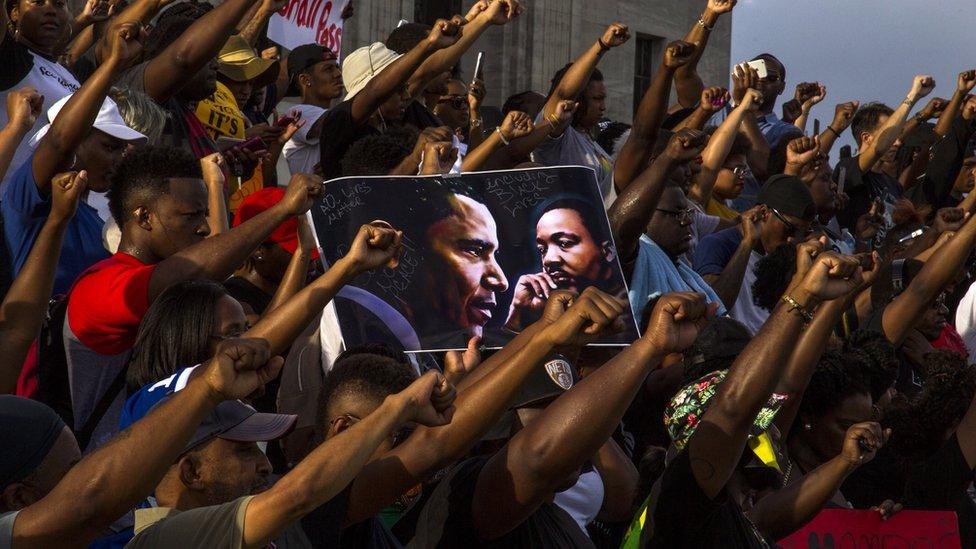
"We want to show outrage but we don't want to tear our community up," said one protester
State Representative Patricia Smith, one of the organisers, told me: "We are praying that it stays peaceful here. We made it through another day. We've had a few arrests, but none of them were really violent.
"We are asking our young people and those from out of town to respect our wishes and the wishes of Alton Sterling's family, that there is no more bloodshed in Baton Rouge."
Community leaders are intervening whenever it looks like the gatherings could turn violent. On several occasions protesters have gathered outside the police headquarters. On Saturday evening they were led by a more militant group, the New Black Panther Party, whose members openly carry weapons.
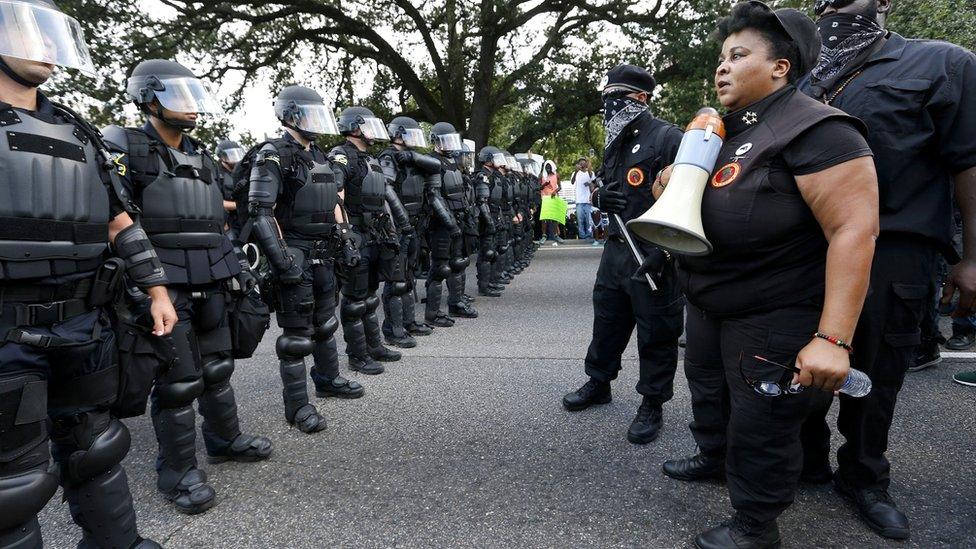
Demonstrators confronted lines of riot officers near police headquarters
Officers dressed in riot gear responded by forming a police line and the two sides came face to face across the street. There have been a few clashes and some arrests. Cleave Dunn Junior is a business owner who, along with others, has worked day and night to defuse the worst of the tension.
He said: "The major thing we want to do is manage emotion and direct that energy on the right path. What we've done here is set the right tone. We want to show outrage, protest and we may even do some civil disobedience, but we don't want to tear our community up and we don't want to harm our city."
Despite the circumstances, our team received the warmest of welcomes. The protesters want the world to hear their cries. But in the feverish heat of summer, it's hard not to feel that this city is close to boiling point. - Laura Bicker

'This might be the tipping point' - St Paul, Minnesota
In St Paul, Minnesota a core of committed protesters still hold a round-the-clock vigil outside the governor's mansion.
On Saturday their numbers swelled for another march to remember Philando Castile, the school cafeteria supervisor shot dead by police last week - drawing a multi-racial crowd, old and young.
'It's been a very long week, a lot of anger and sadness and emptiness,' said Corydon Nilsson, a young Black Lives Matter activist.
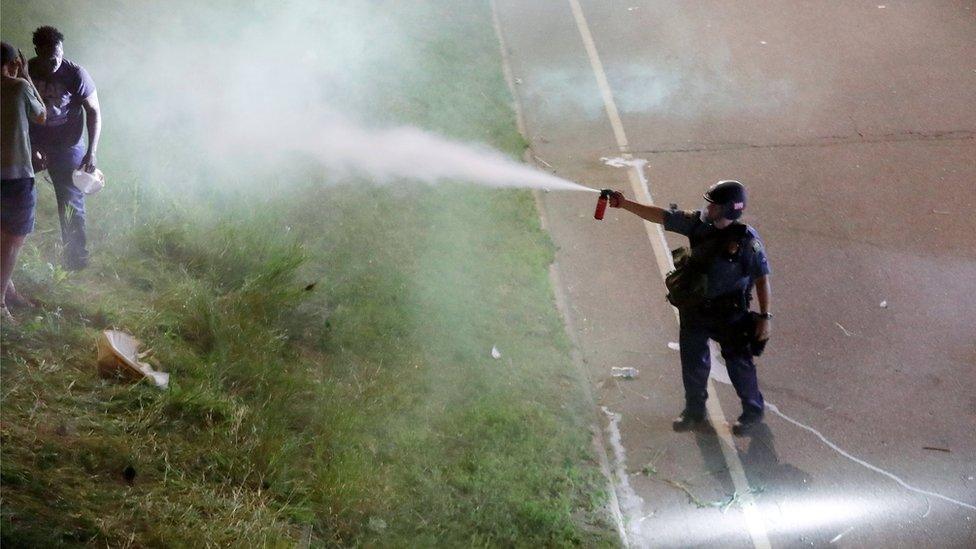
Protesters were pushed back with pepper spray and smoke bombs
The killing of five police officers in Dallas has deepened those emotions but hasn't overtaken the outrage caused by the video of Castile's dying moments, documenting a routine traffic stop that turned into a killing.
"We mourn with everyone who dies," said Jason Sole of the Minneapolis National Association for the Advancement of Colored People (NAACP). "But I don't think it's changed what we're out here fighting for. We're dying consistently for the colour of our skin… and it has to stop."
"I think [the Dallas attack] was a setback but we've reached a point where everyone is galvanized by what happened here," said Mr Nilsson, who grew up in the middle class suburb of Falcon Heights, where Castile died.
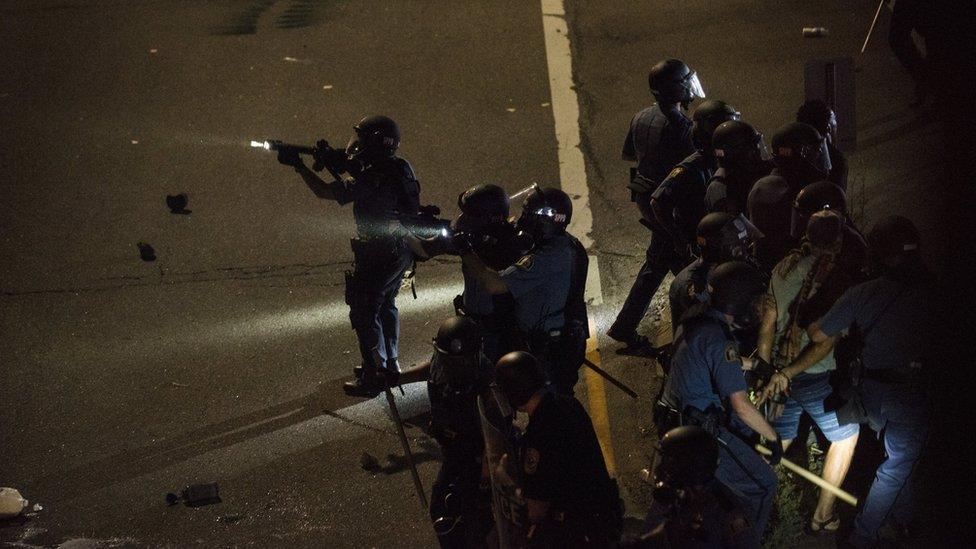
The protest shut down Minnesota's highway I-94 and police took up positions in the road
At a mostly white church in Falcon Heights, a service was held to honour all those who died in the tumultuous week and to renew pledges to fight racial injustice - mindful of the shadow of Dallas.
"I think we do have to be careful that we don't lose attention on the two deaths from earlier in the week, as much as our hearts grieve for those killed in the line of duty," said pastor Reverend Anne Swallow Gillis.
"So we have to be able to hold both in our hands and that's very difficult, very difficult," she said.
Jay Bryson, a protester, said: "Our gun culture is out of control right now. It's got to flip sometime, this might be the tipping point."
As night fell, some protesters shut down part of an interstate highway west of St Paul, throwing bottles and fireworks at policemen who used smoke bombs to disperse the crowd.
"This is what's going to get attention," said one bystander, who did not want to be named.
"If I had done the same thing [as the policeman who shot Castile] I'd be in jail," said another. "This is the consequence." - Barbara Plett Usher

- Published8 July 2016
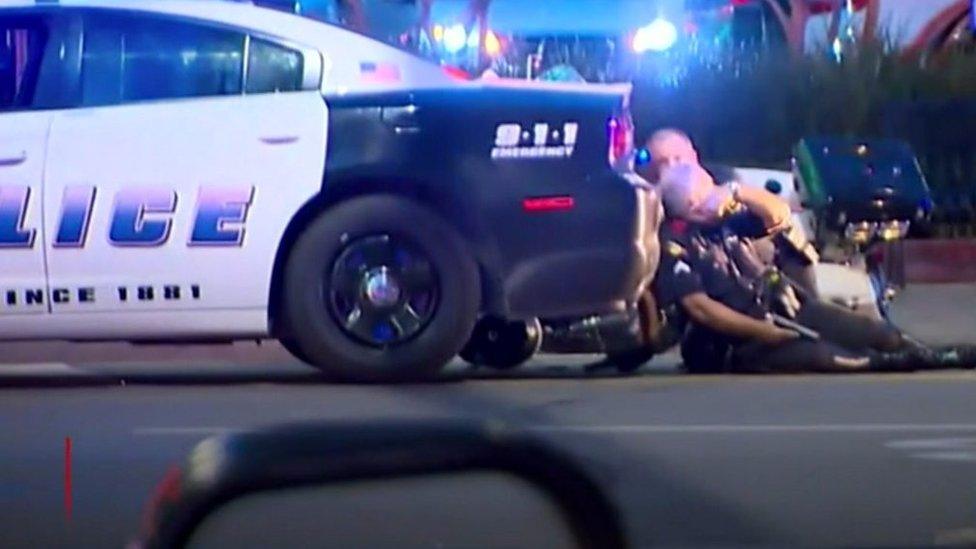
- Published9 July 2016

- Published9 July 2016
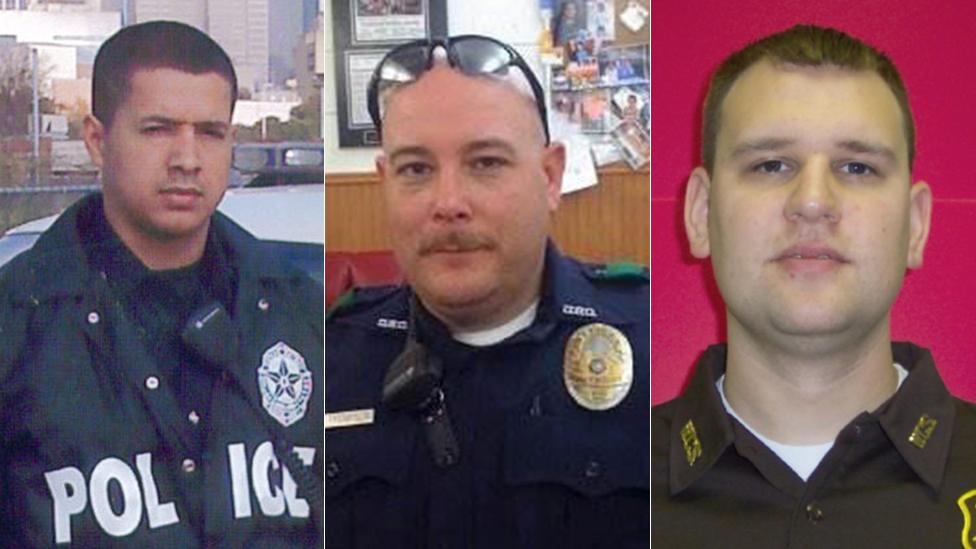
- Published9 July 2016
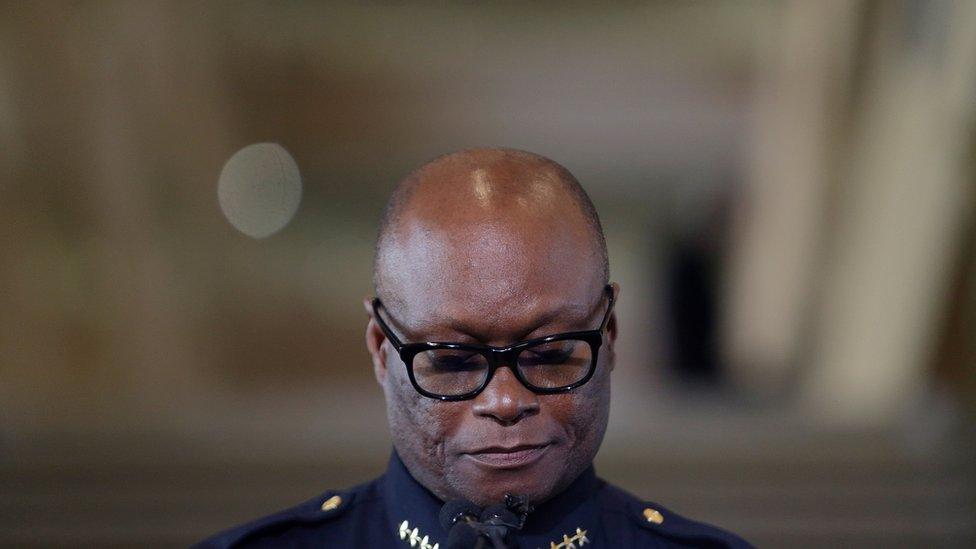
- Published9 July 2016
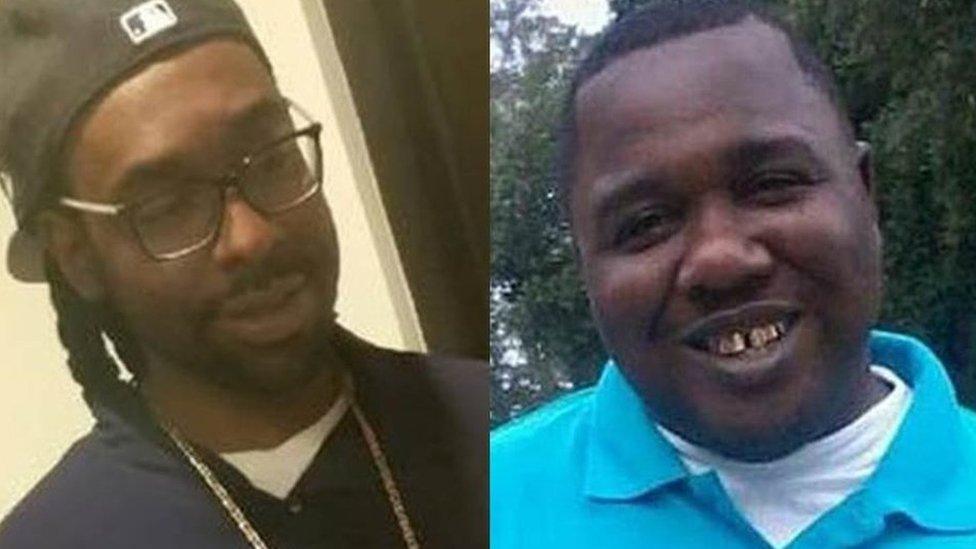
- Published8 July 2016
- Published8 July 2016

- Published8 July 2016
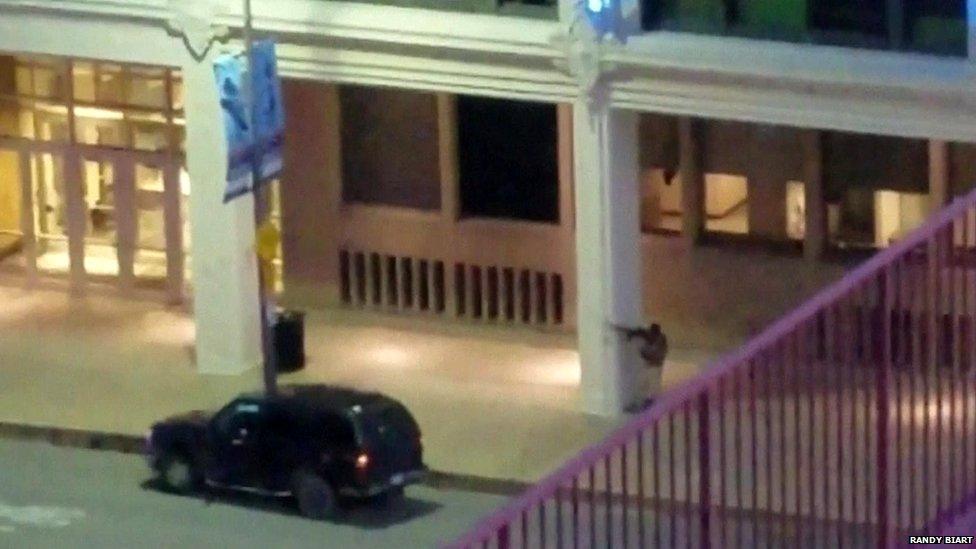
- Published8 July 2016
